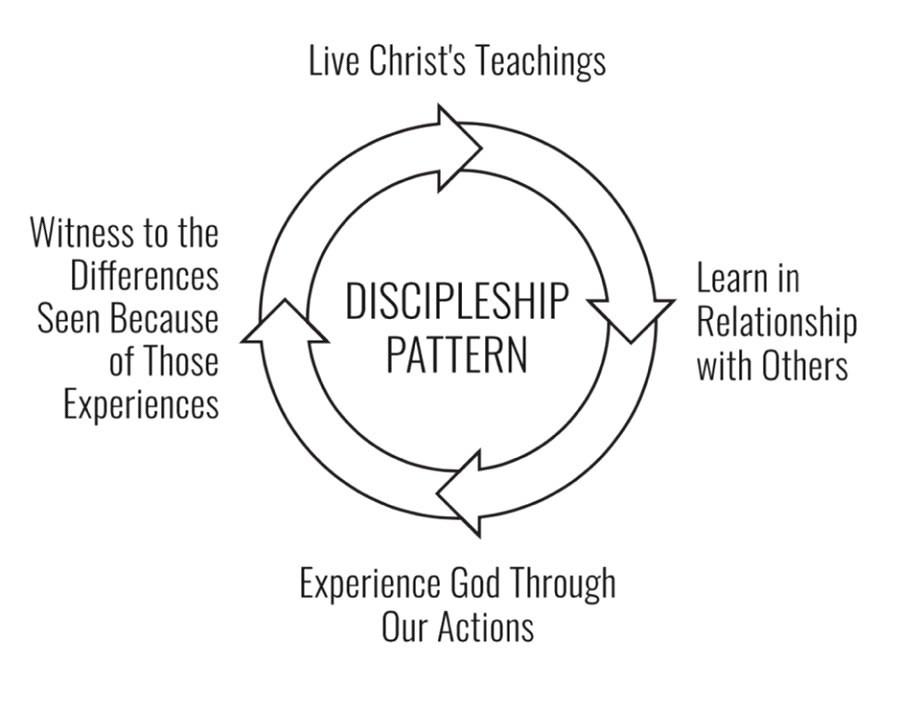THE REBOOT BLOG | March 11, 2021

Making Room for the Other
A Response (Part III)
By Chris Wilterdink

Even with the best of intentions, we can inadvertently create separation and division where none needs to exist. We’re never going to create the perfect, welcoming atmosphere – after all, we are only human. John Wesley, in reflecting on the idea of “being perfect” from Matthew 5:48, came to understand that living into Christian perfection does not mean we’ll ever be free of flaws. Nevertheless, we can choose actions rooted in love and design systems that encourage choices that demonstrate love for God and neighbor (the Great Commandment). We can express our praise to God through our acts of welcome to our neighbor. What then would intentional welcome for strangers and unfamiliar youth or families look like within the bounds of youth ministry?
The adolescent journey grows out of three root questions that relate to Identity, Belonging, and Purpose. These questions get asked at various stages of maturity, and continuously inform each other as people grow.
Who am I?
In a social sense, this question gets answered through experimentation and self-reflection, as one travels the “Via Positiva” (I tried this, I liked it, and I recognize it as part of my identity) or the “Via Negativa” (I tried this, I did not like it, I do not want to make that part of my identity). How can your ministry help young people answer questions about identity related to “Who am I to God?” Youth should first be able to identify themselves as a Child of God, and then learn to recognize the image of God in others. In this way, they can recognize that any “outsider” or “other” label is a human-made distinction. The concept of “Imago Dei”, that all of us bear the image of God, reminds us that we all deserve relationship and the chance to be understood.
Where do I fit?
As youth grow into their identity, they also want to know how they fit in with others socially—in our case within a youth ministry or local church. Discovering a sense of belonging relates to understanding one’s own spiritual gifts or natural abilities. Belonging has a lot to do with understanding the culture being defined by a larger group. How does your ministry help people answer questions related to belonging related to “What part of the body of Christ am I?” and “How do I relate to the other parts of this expression of Christ?” If youth feel like they belong – that they have an opportunity to genuinely express identity and grow in faith – they are more likely to help others achieve that same sense of belonging.
What am I doing here?
We tend to remain active and grow into leadership when we find purpose and reason (beyond merely being counted on an attendance roster). Purpose fuels us, providing the energy we give to communities, groups, projects, or movements. How does your ministry help youth answer the question of “What?” If youth see an impact through their actions or participation, they are more likely to commit themselves not only to the community which empowers them, but also they are likely to become ambassadors who invite others to join them.
Friendship in Youth Ministry
The words “friend” and “enemy” are understood as opposites in the English language. Biblical translations from Latin use the word “enemy” for “inimicus” or “inimico.” This word was formed by combining “in-“ (which means “not”) and “amicus” (which means friend). So, the word that gets translated enemy in English originally meant someone who was not yet a friend…someone unfamiliar…someone that we would call “other!” What are ways that your ministry can help youth transform their understanding of someone who is unfamiliar from being a threat to someone who is not yet a friend?
Consider the following intentional, four-fold structure of discipleship as a cornerstone of your youth ministry. The following actions frame a simple pattern of discipleship that prioritizes others, centralizes relationship, and develops friendship. There is no start or end point; each action feeds into the next and repeats in a continuous cycle.
⦁ Live Christ’s Teachings with Others
⦁ Learn in Relationship with Others
⦁ Experience God Through Our Actions
⦁ Witness to our Growth
Any youth ministry can create a culture with these practices. When these behavior patterns define the rhythms and purposes of your youth ministry, the concept of the “other” begins to fade into the background—as each of these actions depend on others! Building a ministry this way will help you, as a leader, create a youth ministry that builds spiritual maturity and demonstrates the Great Commandment to God and neighbor.
Chris Wilterdink is the Director of Young People’s Ministries (Discipleship Ministries of the United Methodist Church).

